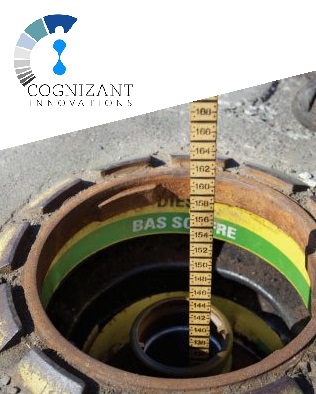Drawbacks of Manual Dipping System
The blog will elaborate the issues around manual dipping through putting light on why Why manual dipping is inaccurate? And outdated? in today’s forecourt environments and its practices DIPPING GOING WRONG: The aim of dipping is to control and reconcile wet stock. However the analysis shows that dipping does not give the control of the fuel stocks efficiently and effectively. Customers told that when using the dipping method, different employees interpret varying readings up to 300 litres due to interpretational difference. Not only this, the margin of error from an Automatic Tank Gauging system can be as low as +/-0.2%, the dip stick has an inherent error from the manufacturing tolerance and is compounded by other factors like wear, swapping between tanks, lookup chart errors, visual interpretation and transcription errors. This means that the difference on a 3m litre annual throughput could be as high as 140,000 litres, which is all unaccounted for.
The list does not limit to only these points but the dipping with paste fails in accurately detect water in the tank. Water allows the proliferation of microbial growth in diesel tanks (B2 onwards) that effects flow-rates at the pump and eventually damages the dispenser. To encounter this problem, one of the properties is that the Automatic Tank Gauging system is automatic water detector and also additional services to monitor flow rates for protective maintenance.
Heard from the fuel retailers that dipping is a free of charge process practically. However dipping consumes time and time is considered as money. Generally for dipping, the staff will spend 30 minutes a day resulting in approximately 182 hours a year that could rather be spent on profit generating activities. With that managing the site dip book and scrutinizing variances take a lot of time that can be maintained by automated monitoring. Not only it is time consuming but a shock to know that how unaccounted for wet stock is often written off when variances cannot be explained. It is necessary for retailers to invest their time and resources in the management and monitoring of their dry stock, but often ignore similar investment in wet stock control. In spite the fact that for every litre unaccounted for, about 20 additional litres must be sold to breakeven.
One of the main problem is the leak on the forecourt could be a loss to your business. Ranging from cleaning up costs can easily exceed to 200k and not limited to the additional expense, the brand image can be damaged. It is abhorrent that many fuel retailers still prefer on manual dipping, an inaccurate and inefficient time method.
A SOLUTION WITH VALUE ADDITION: How can an Automatic Tank Gauge help? An Automatic Tank Gauge gives access to accurate, appropriate and unvaried wet stock information and can automate reconciliation and leak detection. Positively, an Automatic Tank Gauge will enhance the daily efficiency and profitability of the sites. By implementing an Automatic Tank Gauge system, retailers will be knowledgeable about the wet stock by understanding variances, marking meter drift, identifying leaks and becoming aware of misinformation on stock delivery or embezzlement. Retailors and owners would have wholesome experience with this system with dimensional benefits and upgradation.


